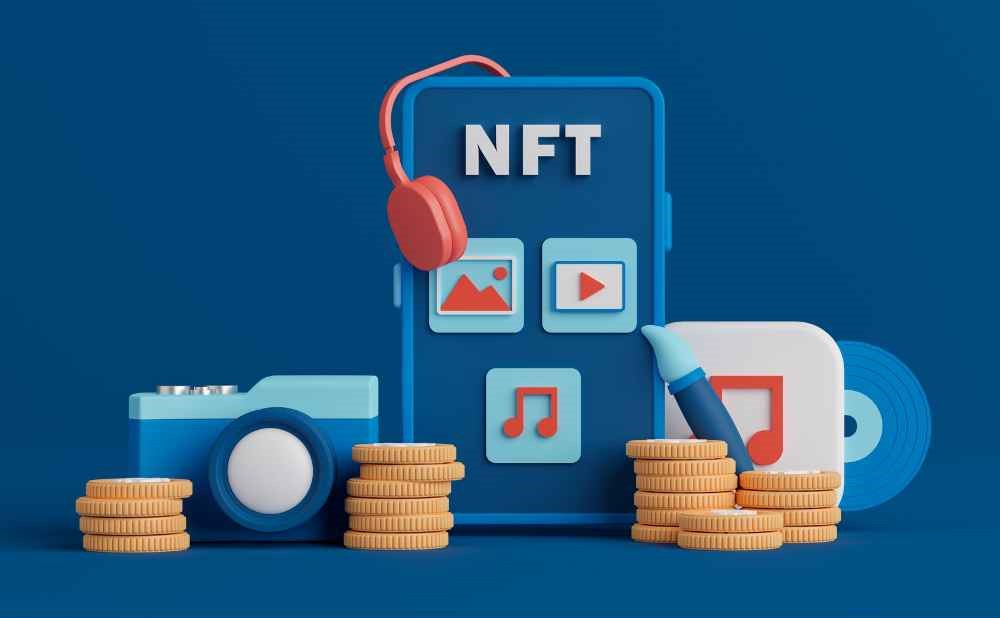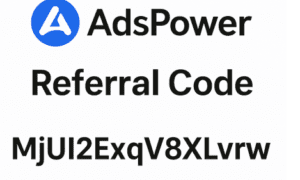The music industry stands at a pivotal crossroads in 2023, with Web3 technologies offering unprecedented opportunities to reshape how music is created, distributed, consumed, and monetized. After decades of artists struggling with unfavorable revenue splits, opaque royalty systems, and intermediary-heavy structures, blockchain technology, NFTs, and decentralized platforms are finally providing viable alternatives. This comprehensive exploration examines how Web3 is transforming the music landscape, empowering artists, and creating entirely new ways for Loop Fans to connect with their favorite musicians.
Understanding Web3 and Its Relevance to Music
Web3 represents the next evolutionary phase of the internet—a decentralized online ecosystem built on blockchain technology. Unlike Web2 (characterized by social media giants and streaming platforms that control user data and content), Web3 prioritizes user ownership, transparency, and direct peer-to-peer interactions without centralized intermediaries.
For the music industry specifically, Web3 offers revolutionary potential in several key areas:
- Direct ownership of digital assets through blockchain verification
- Smart contracts that automatically execute royalty payments
- Decentralized platforms reducing dependency on corporate intermediaries
- Community governance allowing stakeholders to influence platform development
- Tokenization creating new economic models for artists and fans
“Web3 isn’t just a technological shift—it’s fundamentally reimagining the economic relationship between artists and their audiences,” explains Alexandra Daptone, blockchain music researcher at Berklee College of Music. “We’re witnessing the infrastructure for a creator-owned music economy being built in real-time.”
The Current State of the Traditional Music Industry
To appreciate Web3’s disruptive potential, we must first understand the challenges of the traditional music ecosystem.
The conventional music industry remains dominated by major labels, streaming platforms, and various intermediaries who collectively capture a disproportionate share of revenue. Despite music consumption reaching all-time highs, artists typically receive only a fraction of the generated value:
- Streaming royalties average between $0.003-$0.005 per stream on major platforms
- Label contracts often claim 80-85% of recording revenue
- Publishing rights are frequently complex and opaque
- Metadata problems lead to billions in unallocated royalties annually
- Secondary ticket markets capture value that could go to artists
“The traditional music industry operates on outdated models designed for physical product distribution,” notes music economist Will Page, former chief economist at Spotify. “Its infrastructure wasn’t built for the digital era, leading to massive inefficiencies and value leakage away from creators.”
Key Web3 Technologies Transforming Music
Blockchain and Music Rights Management
Blockchain technology—the distributed ledger system underlying cryptocurrencies—offers transformative potential for music rights management. By creating immutable records of ownership and usage rights, blockchain addresses long-standing problems in royalty distribution and rights attribution.
Platforms like Audius and Catalog leverage blockchain to create transparent ownership records that travel with the music itself. Smart contracts automatically execute royalty splits according to predetermined agreements whenever music is purchased, streamed, or licensed.
“Blockchain solves the music industry’s metadata crisis,” explains Roneil Rumburg, co-founder of Audius. “When ownership information lives on a public blockchain, the ‘black box’ of unattributed royalties becomes obsolete. The technology ensures creators get paid accurately and promptly.”
NFTs and Direct Artist Monetization
Non-fungible tokens (NFTs) represent unique digital assets whose ownership is verified on a blockchain. For musicians, NFTs have opened entirely new revenue streams and fan engagement models.
Artists from Grimes to Kings of Leon have released music and digital collectibles as NFTs, with some single releases generating millions of dollars—far exceeding what they might earn from millions of streams. Notable music NFT examples include:
- Limited edition album releases with exclusive artwork and content
- Song ownership fractionalization allowing fans to invest in their favorite tracks
- VIP experiences tied to token ownership
- Generative music creating unique algorithmic compositions for each NFT owner
“NFTs completely change the economics for middle-class musicians,” says RAC, Grammy-winning producer who has embraced Web3. “Instead of needing millions of streams to make a living, artists can sell higher-value digital assets directly to a smaller community of dedicated supporters.”
DAOs and Collaborative Music Ownership
Decentralized Autonomous Organizations (DAOs) represent a new organizational structure where decisions are made collectively by community members rather than centralized leadership. In music, DAOs enable fascinating new models for collaboration, funding, and shared ownership.
Songcamp operates as a Web3 music creation collective that splits ownership of collaboratively created music among contributors. Pleasr DAO purchases culturally significant music assets, giving members fractional ownership of historically important works, including the one-of-a-kind Wu-Tang Clan album previously purchased by Martin Shkreli.
Meanwhile, fan DAOs like Noise DAO pool resources to support emerging artists, essentially functioning as community-run record labels with transparent governance.
Artist Success Stories in the Web3 Music Space
Independent Artists Finding Financial Sustainability
Web3 has already created life-changing opportunities for artists operating outside traditional industry structures. Electronic musician 3LAU (Justin Blau) sold a collection of NFTs for $11.7 million in early 2021, dramatically exceeding his previous income from streaming and performances.
Similarly, formerly independent artist Daniel Allan raised over $700,000 through a “funding NFT” that allowed him to stay independent while creating his album “Overstimulated,” with NFT holders receiving a percentage of future streaming royalties.
“Web3 allowed me to bypass the traditional system entirely,” explains Allan. “Instead of signing away rights to fund album creation, I partnered directly with fans who believed in my vision and now share in its success.”
Major Artists Pioneering New Models
It’s not just independent artists embracing Web3. Established musicians increasingly explore its potential to enhance their existing careers:
- Snoop Dogg purchased Death Row Records and transformed it into a Web3 label, releasing NFT collections tied to the iconic catalog
- Timbaland launched Ape-In Productions, creating music and entertainment using Bored Ape Yacht Club characters
- Diplo releases limited edition NFT mixes that can’t be found on streaming platforms
- Steve Aoki reportedly makes more revenue from NFTs than from his entire 20-year music career
“Even for artists who’ve succeeded in the traditional system, Web3 offers creative freedom and direct fan relationships that weren’t previously possible,” observes Shara Senderoff, co-founder of Raised In Space music investment firm.
Fan Engagement and Community Building in Web3
Moving Beyond Passive Consumption
Web3 transforms the fan-artist relationship from passive consumption to active participation. Token ownership creates a sense of genuine community and shared destiny between creators and their supporters.
“When fans own pieces of an artist’s ecosystem, their relationship fundamentally changes,” explains Cooper Turley, crypto music strategist. “They shift from consumers to stakeholders, with incentives aligned toward the artist’s long-term success.”
This alignment manifests in several innovative ways:
- Access tokens granting exclusive content and experiences
- Governance rights allowing fans to vote on creative decisions
- Community platforms where token holders collaborate with artists
- Collector communities that form around shared ownership of an artist’s work
Creating Sustainable Economic Models
Web3 introduces economic models that better reflect the true value superfans place on music. Rather than forcing all listeners into the same consumption model (streaming), tokenization allows different engagement levels based on fan commitment.
“The streaming economy flattened music into a commodity,” observes Mat Dryhurst, musician and researcher. “Web3 re-introduces scarcity and graduated value tiers, allowing artists to capture more of the true worth their most dedicated fans place on their work.”
Challenges and Criticisms of Web3 Music
Despite its potential, Web3 music faces significant obstacles to mainstream adoption:
Technical Barriers to Entry
The current Web3 experience requires navigating complex cryptocurrency wallets, gas fees, and technical concepts unfamiliar to most music fans. This friction severely limits adoption beyond crypto enthusiasts.
“The user experience simply isn’t there yet for mainstream music fans,” admits Jesse Grushack, co-founder of music NFT platform Ujo Music. “Until interacting with Web3 music becomes as simple as using Spotify, mass adoption will remain challenging.”
Environmental Concerns
Early NFT platforms built on proof-of-work blockchains like Ethereum faced legitimate criticism over energy consumption. While the industry has largely shifted toward more sustainable systems—with Ethereum itself moving to proof-of-stake in 2022—the environmental perception problem persists.
“The environmental narrative around NFTs is outdated but sticky,” notes Fanny Lakoubay, sustainability advisor for blockchain art platforms. “Most music NFTs now use carbon-neutral or environmentally friendly blockchains, but the initial backlash created lasting skepticism.”
Speculative Elements and Market Volatility
The 2021-2022 NFT boom introduced significant speculative behavior that sometimes overshadowed the artistic and community-building aspects of Web3 music. Price crashes and “crypto winter” conditions have forced a reevaluation of sustainable models.
“The speculative frenzy wasn’t healthy for building lasting infrastructure,” acknowledges Hisham Dahud, founder of web3 music marketing agency Vérité. “The market correction forced everyone to focus on creating genuine utility rather than riding hype cycles.”
Major Platforms and Projects Shaping Music’s Web3 Future
Artist-Focused Blockchain Music Services
Several platforms have emerged as leaders in the Web3 music space, each with different approaches to empowering artists:
- Audius: A decentralized streaming platform with over 7 million monthly users where artists earn tokens based on listener engagement
- Sound.xyz: Specializes in music NFT “editions” that function like limited-release singles
- Royal: Allows fans to purchase fractional ownership in songs and earn royalties alongside artists
- Catalog: Functions as a curated marketplace for one-of-one music NFTs, similar to art collecting platforms
- Nina: Combines elements of Bandcamp with Web3 ownership features, focusing on the electronic music community
Major Labels and Web3 Strategy
Traditional industry players aren’t ignoring Web3’s potential. Major labels have begun strategic investments and partnerships:
- Universal Music Group partnered with NFT platform Curio to develop collectibles for their roster
- Warner Records launched Probably Nothing, a Web3-focused subsidiary
- Sony Music filed multiple patents related to blockchain music rights management
- Live Nation developed NFT-based concert memorabilia programs
“The majors are taking a cautious but deliberate approach to Web3,” observes entertainment attorney Jessie Winkler. “They’re investing enough to maintain optionality without cannibalizing their existing business models.”
The Future Outlook: Web3 Music in 2023 and Beyond
Integration with Web2 Services
Rather than a complete replacement of existing platforms, the most likely near-term scenario involves Web3 features gradually integrating with familiar Web2 services. Spotify has already begun exploring NFT integration, while platforms like OneOf partner with mainstream entertainment brands to create accessible NFT experiences.
“The future isn’t Web2 versus Web3—it’s Web2.5,” suggests Scott Cohen, former Warner Music innovation executive. “Existing platforms will incorporate blockchain features while Web3-native services improve user experience to meet consumer expectations.”
Evolving Regulatory Landscape
As Web3 music grows, regulatory frameworks will significantly impact its development. Ongoing discussions about cryptocurrency regulation, NFT classifications, and intellectual property in decentralized spaces will shape what’s possible.
“We’re operating in a regulatory gray area,” cautions Christopher Bavitz, Managing Director of Harvard’s Cyberlaw Clinic. “Artists and platforms need to carefully consider securities laws, copyright implications, and emerging digital asset regulations.”
The Long-Term Vision: A Music Industry Renaissance
Despite challenges, Web3 advocates envision a fundamental restructuring of music economics that could reverse decades of creator disempowerment. By removing unnecessary intermediaries and reconnecting artists directly with fans, blockchain technology might enable a more vibrant and sustainable music ecosystem.
“We’re witnessing the early stages of a renaissance in how music creates and captures value,” concludes Water & Music founder Cherie Hu. “Web3 gives us the opportunity to rebuild music’s economic infrastructure from first principles, with creator ownership and community engagement at its core.”
Conclusion: A Balanced View of Web3’s Impact on Music
Web3 represents neither a magical solution to all music industry problems nor a passing fad destined for irrelevance. The reality lies somewhere in between—offering genuinely innovative tools that address long-standing issues while facing significant adoption challenges and necessary refinement.
For artists, the wisest approach is engagement without overcommitment. Understanding blockchain music platforms, experimenting with NFTs, and building community through token-based systems can supplement traditional career paths while this technology continues maturing.
For fans, Web3 offers unprecedented opportunities to directly support favorite artists while participating in their creative journeys as true stakeholders rather than passive consumers.
The music industry has weathered numerous technological disruptions throughout its history. Web3 represents potentially the most fundamental shift yet—not just in how music reaches audiences, but in who controls and benefits from its value. While the ultimate impact remains uncertain, the core promise of creator ownership and direct community engagement represents a compelling vision worth pursuing.





























